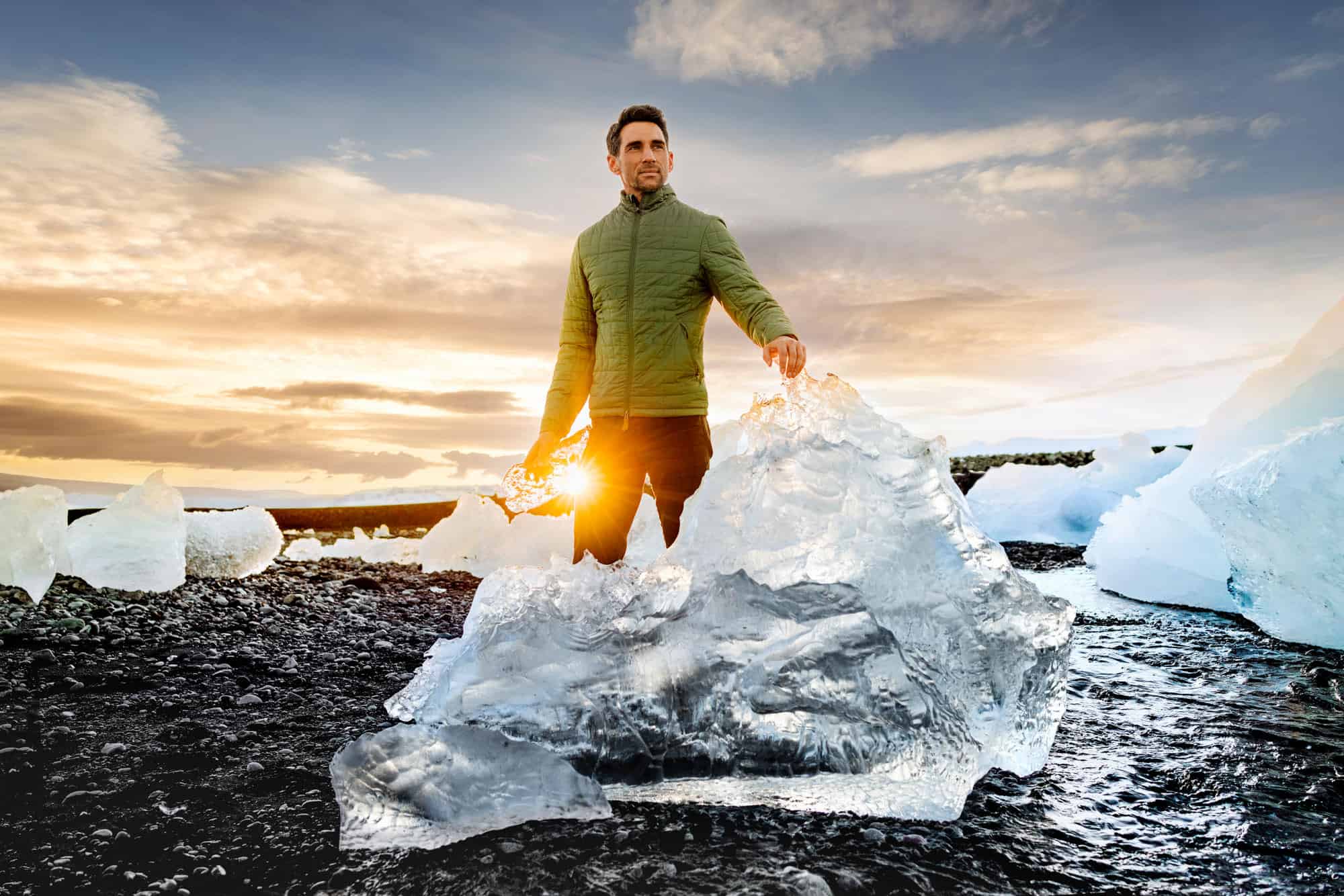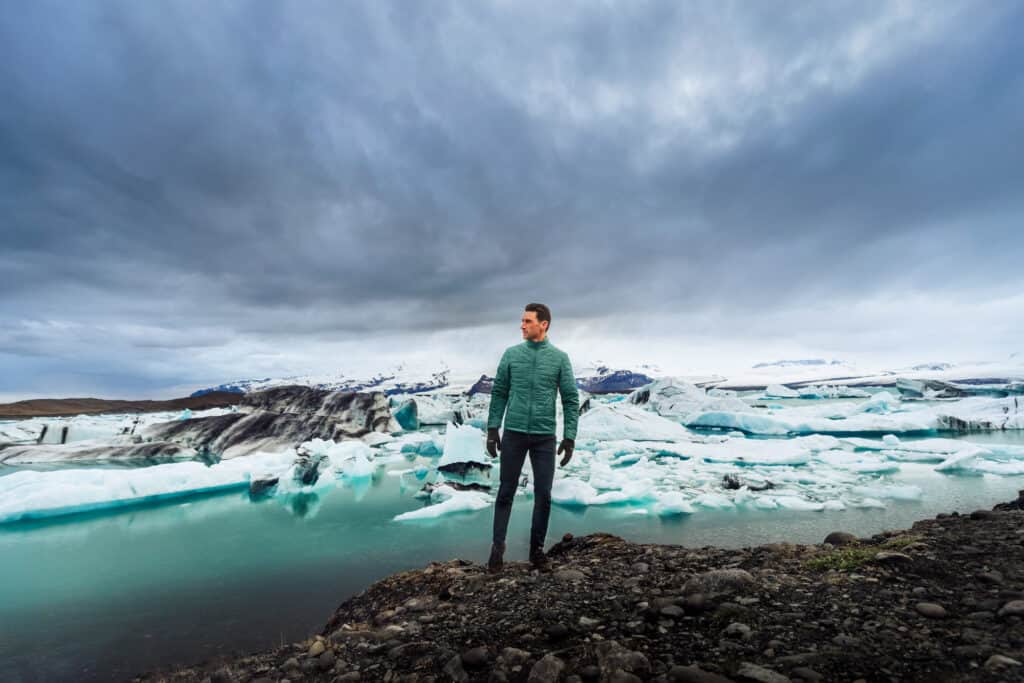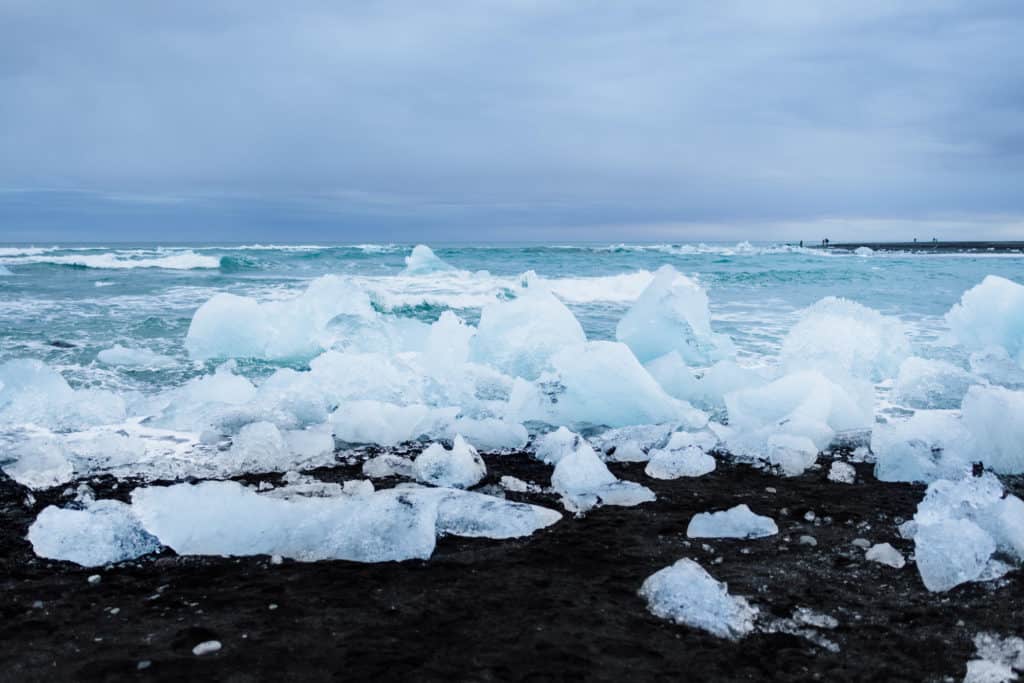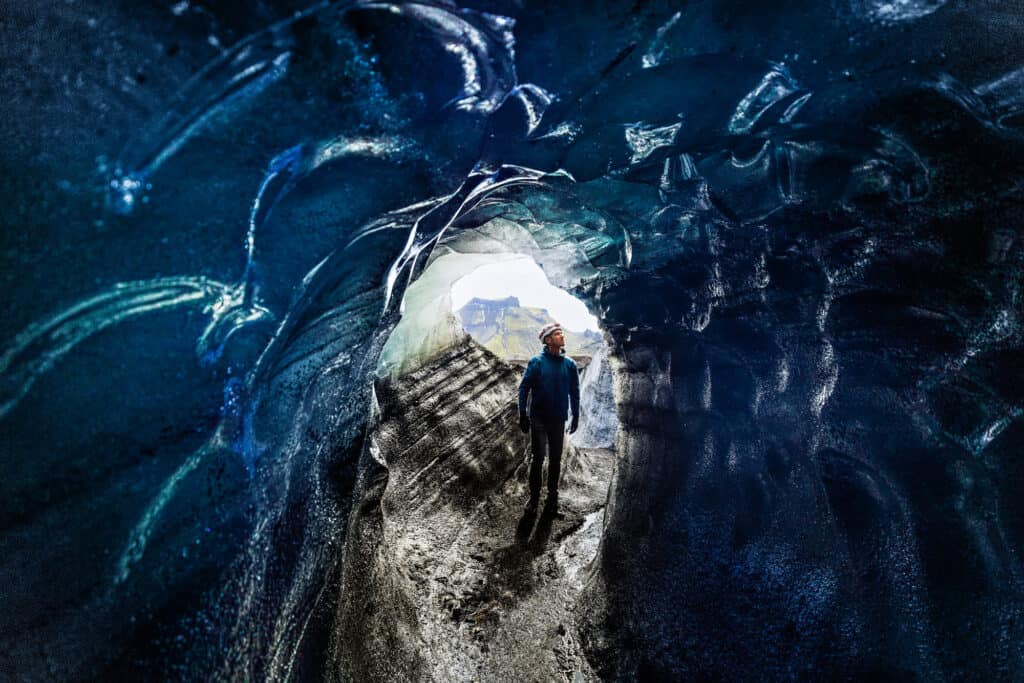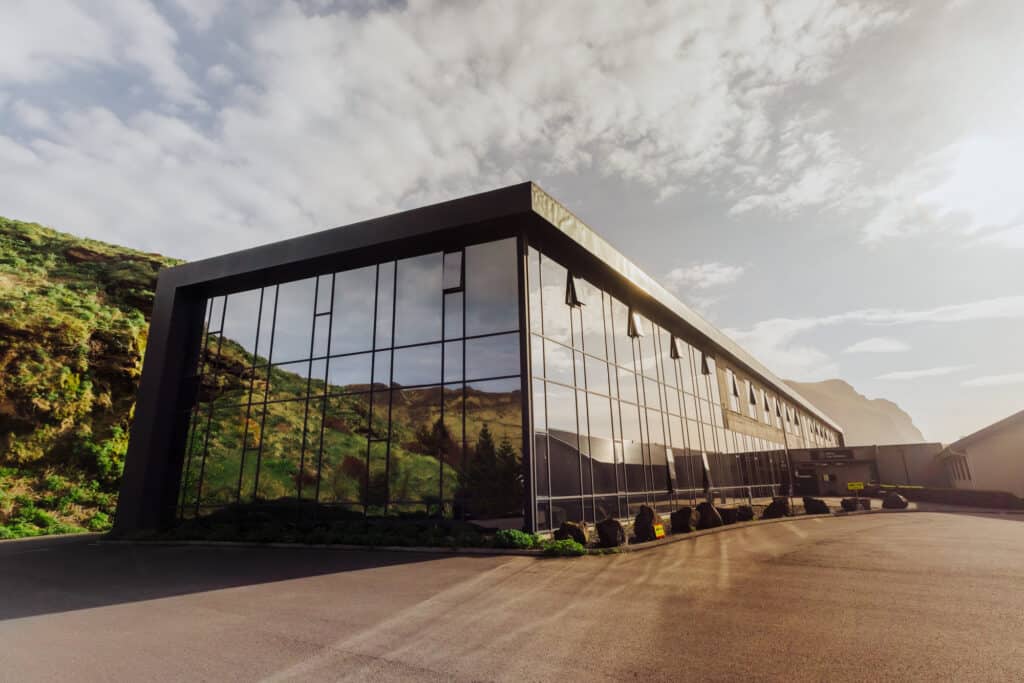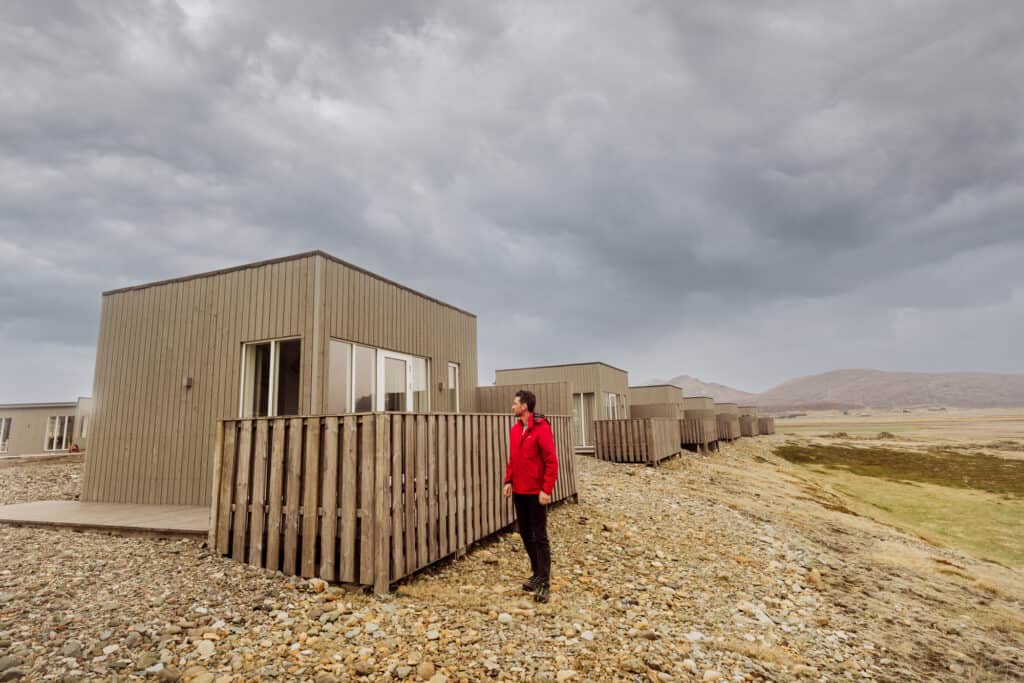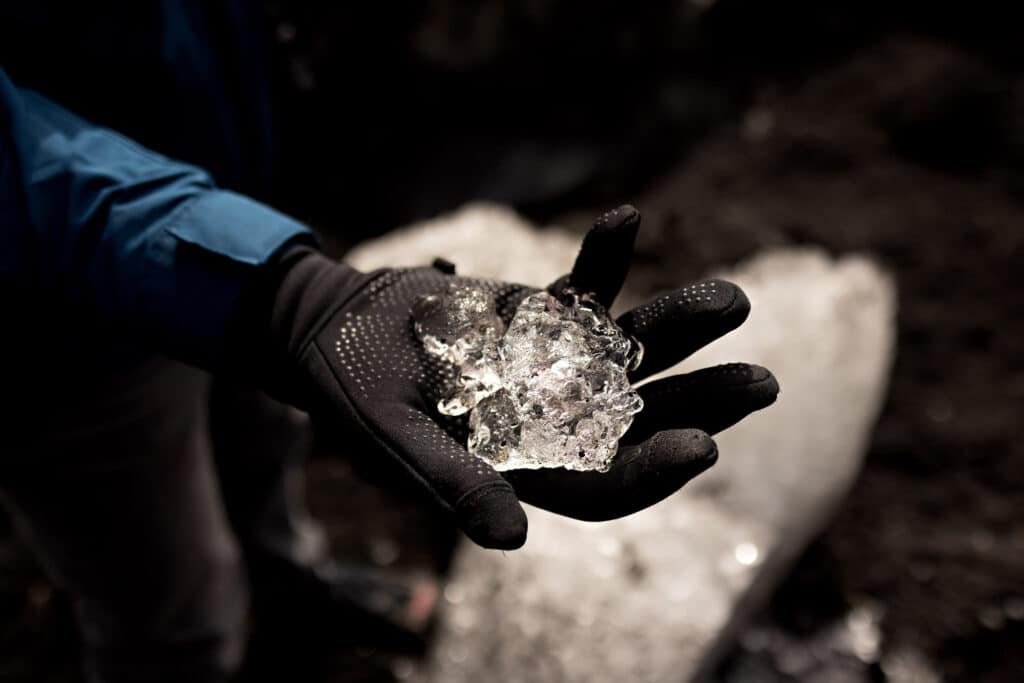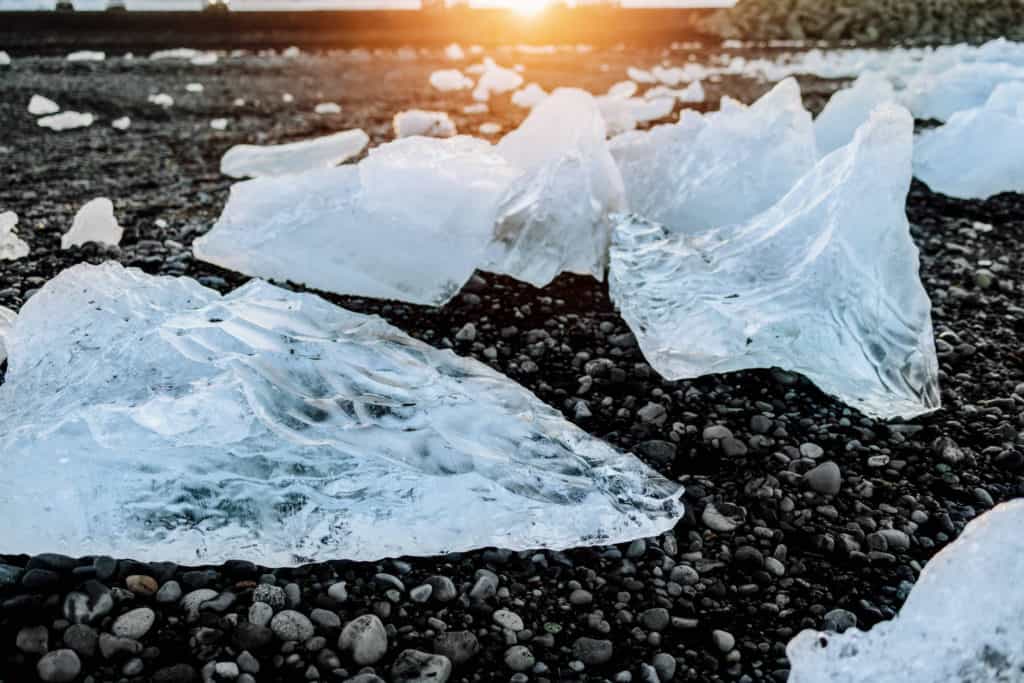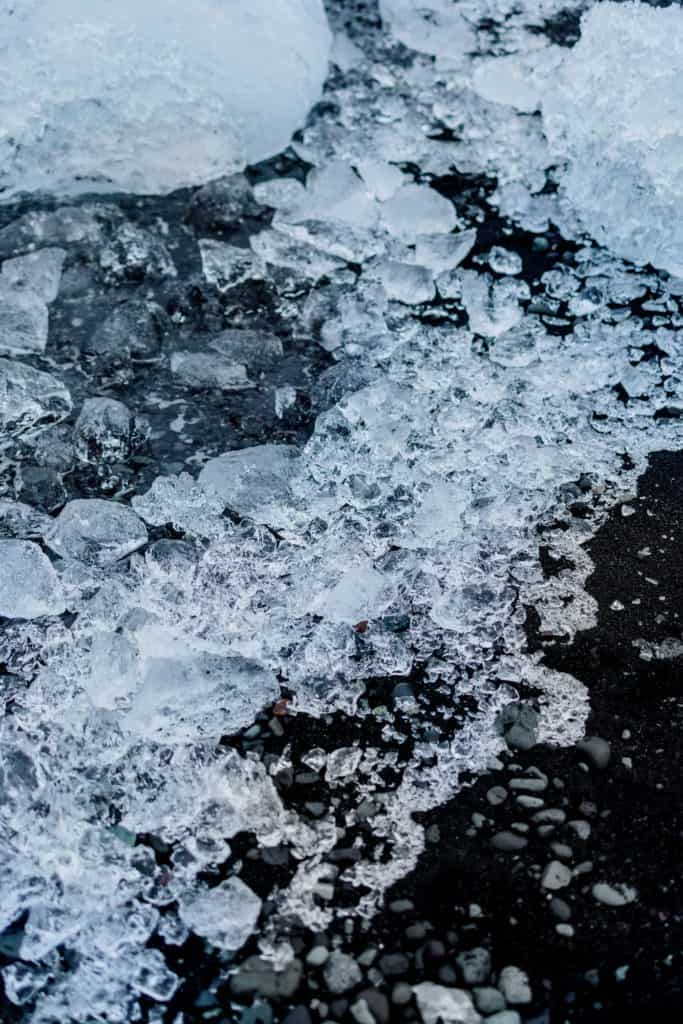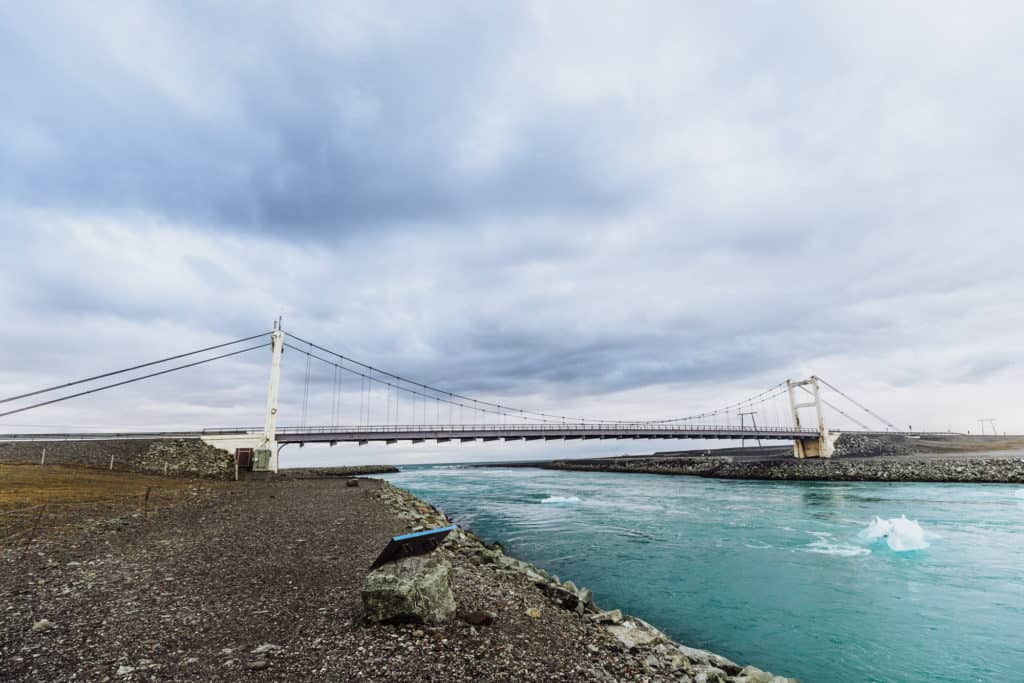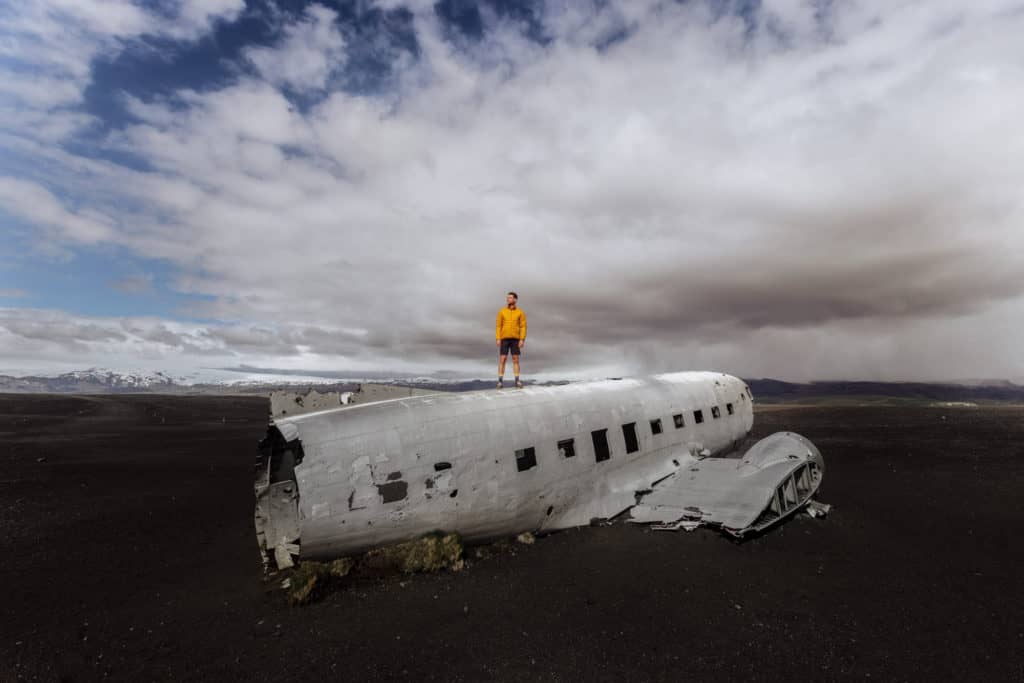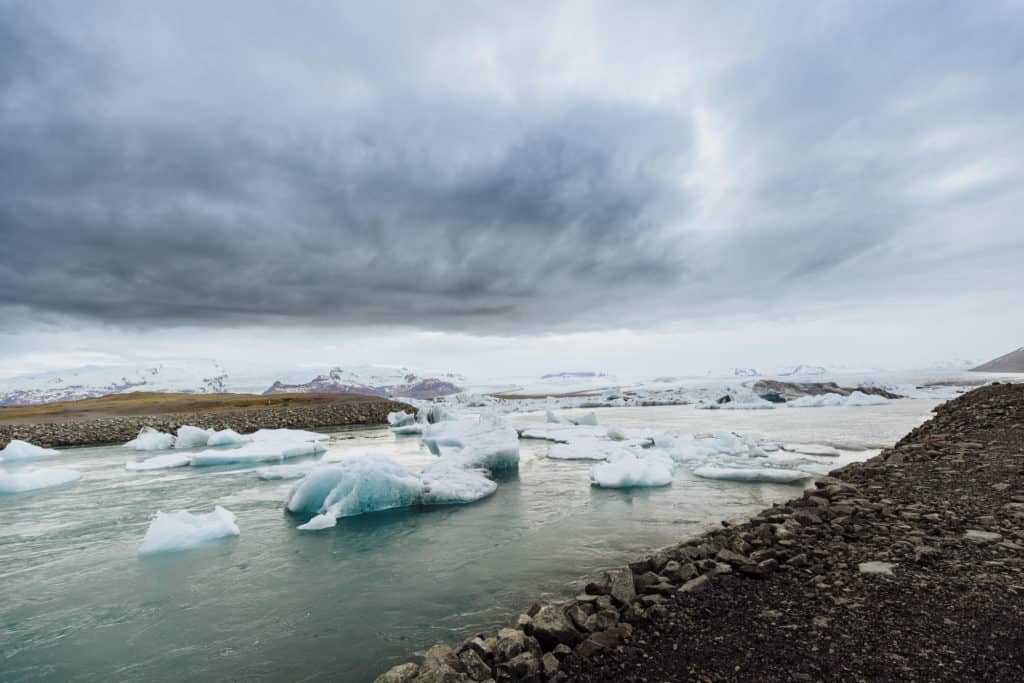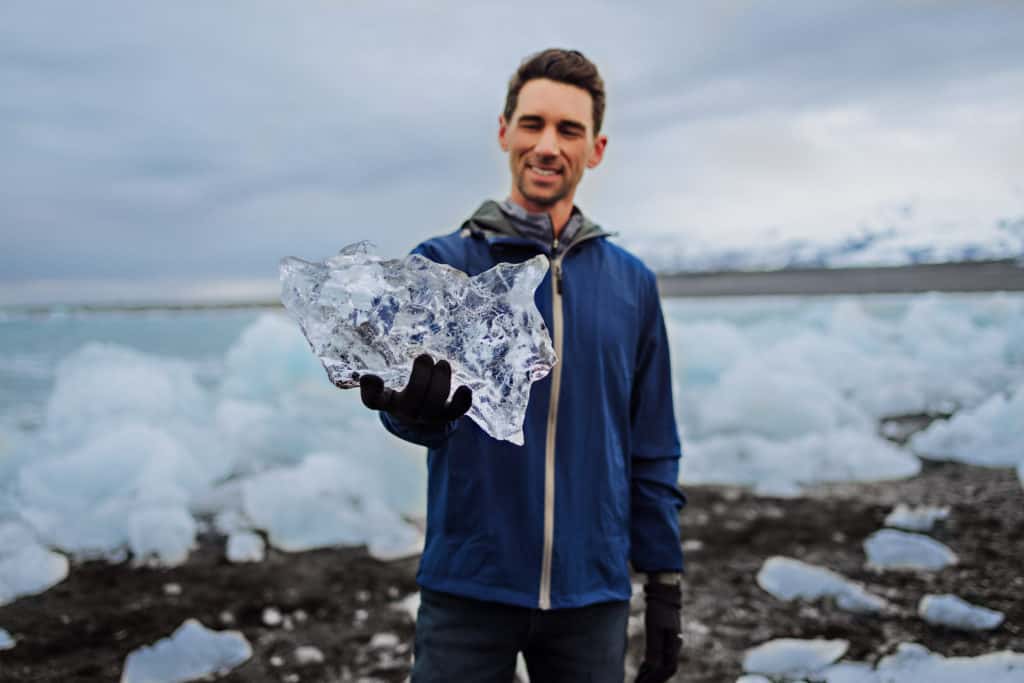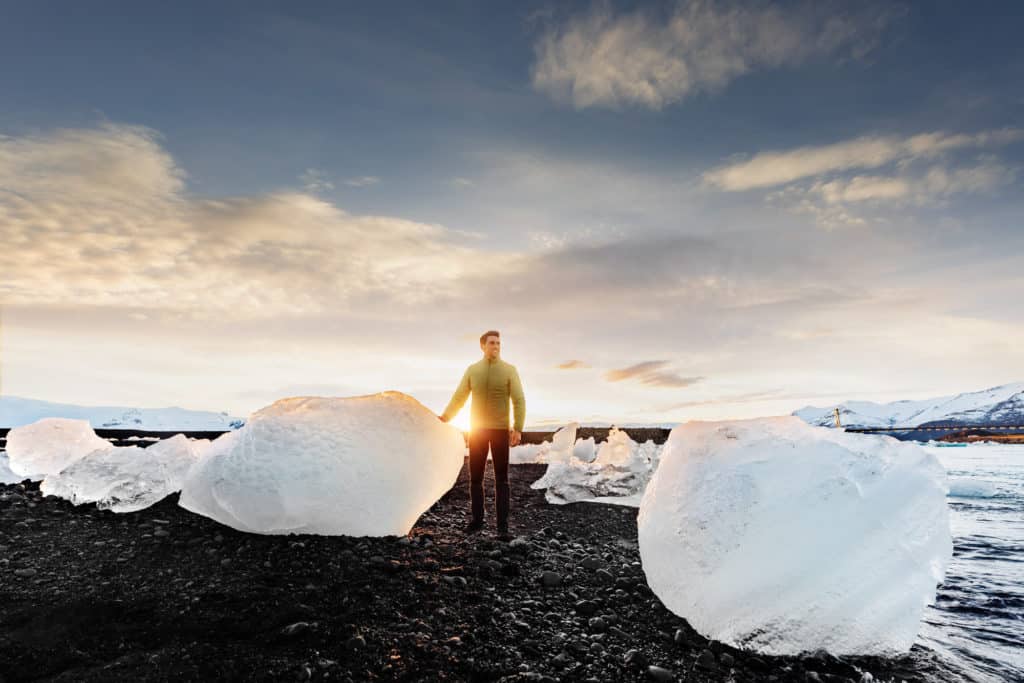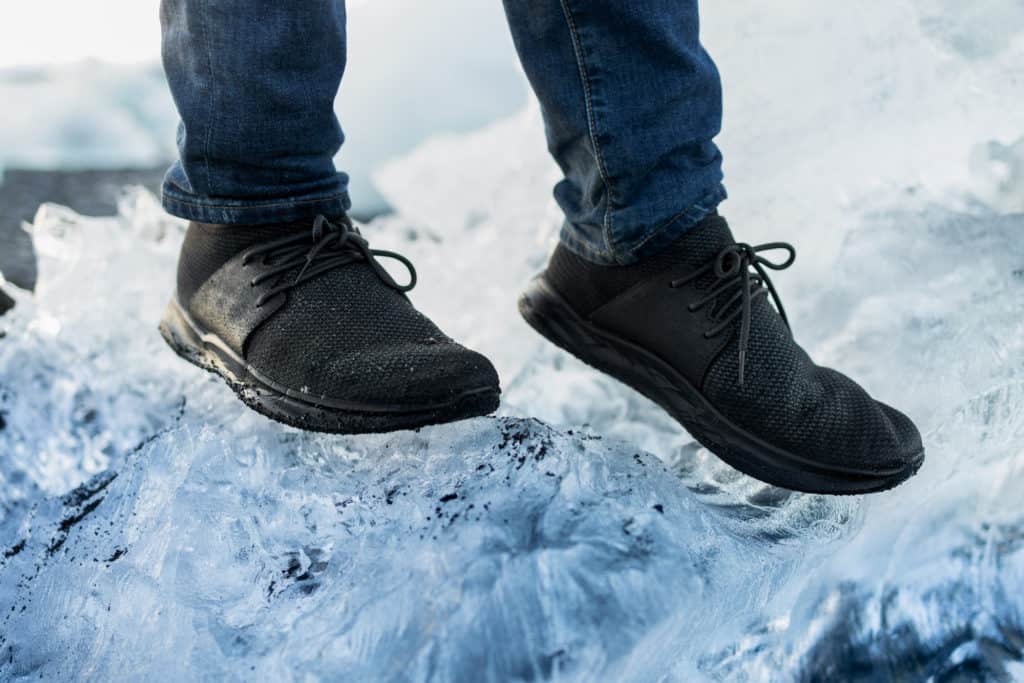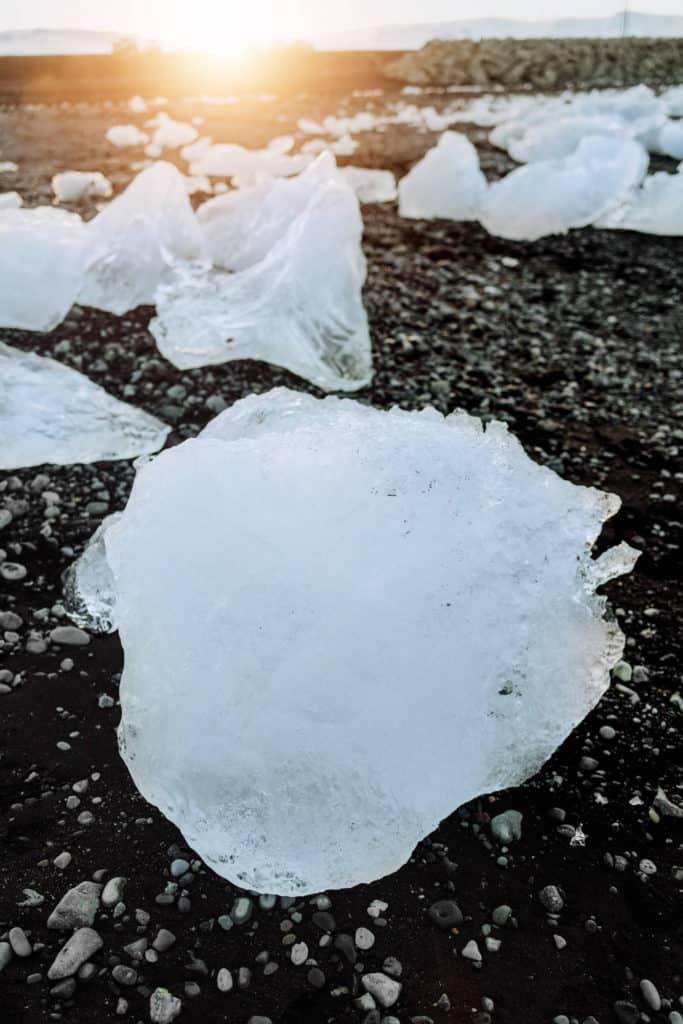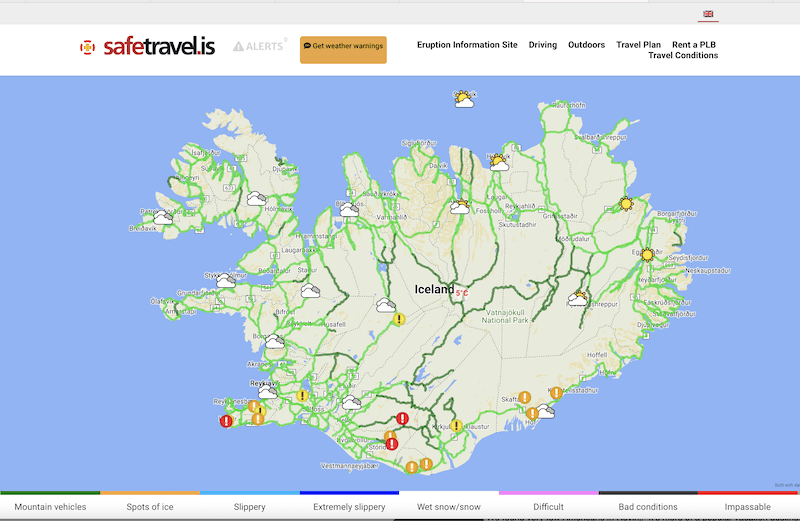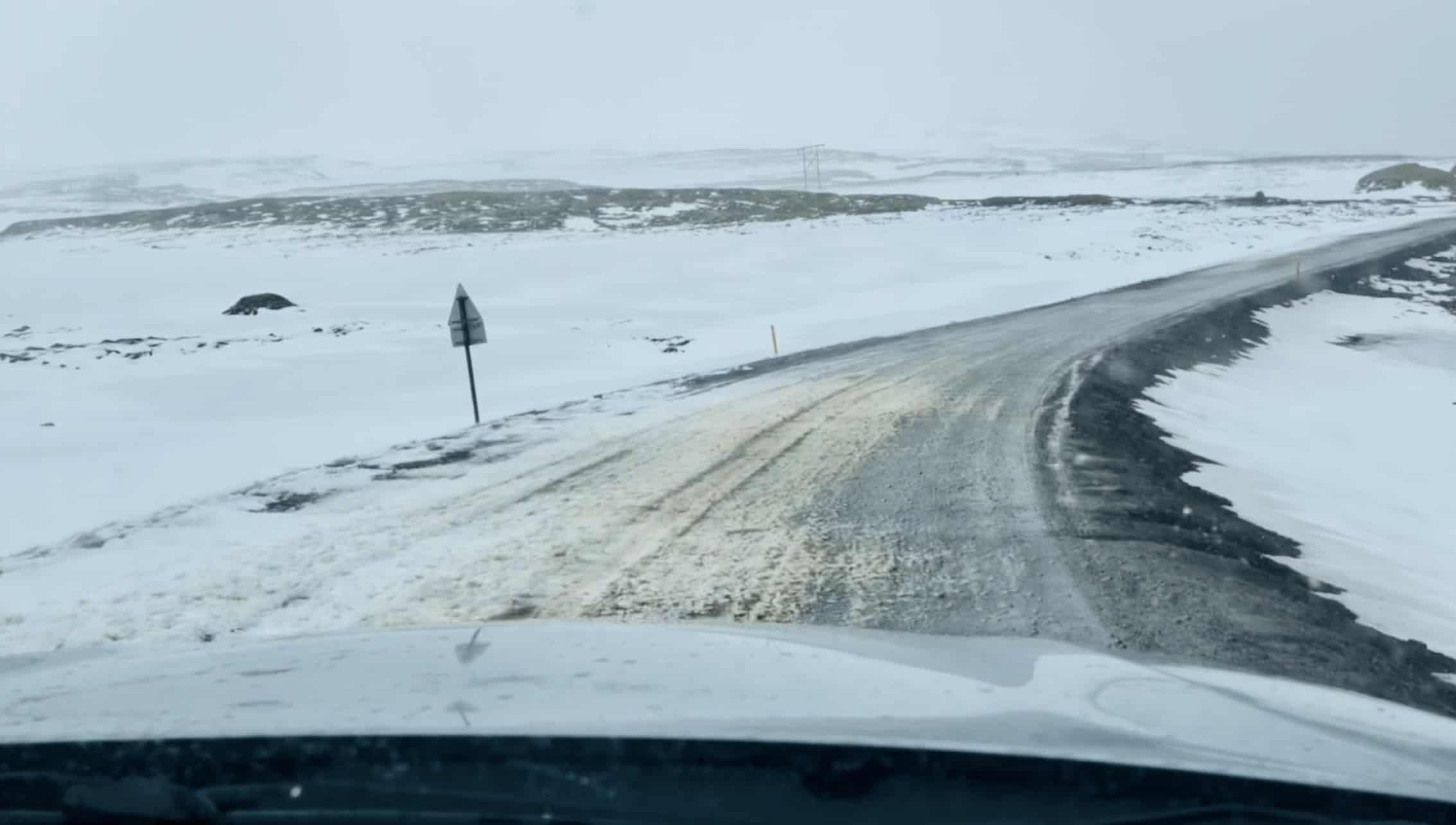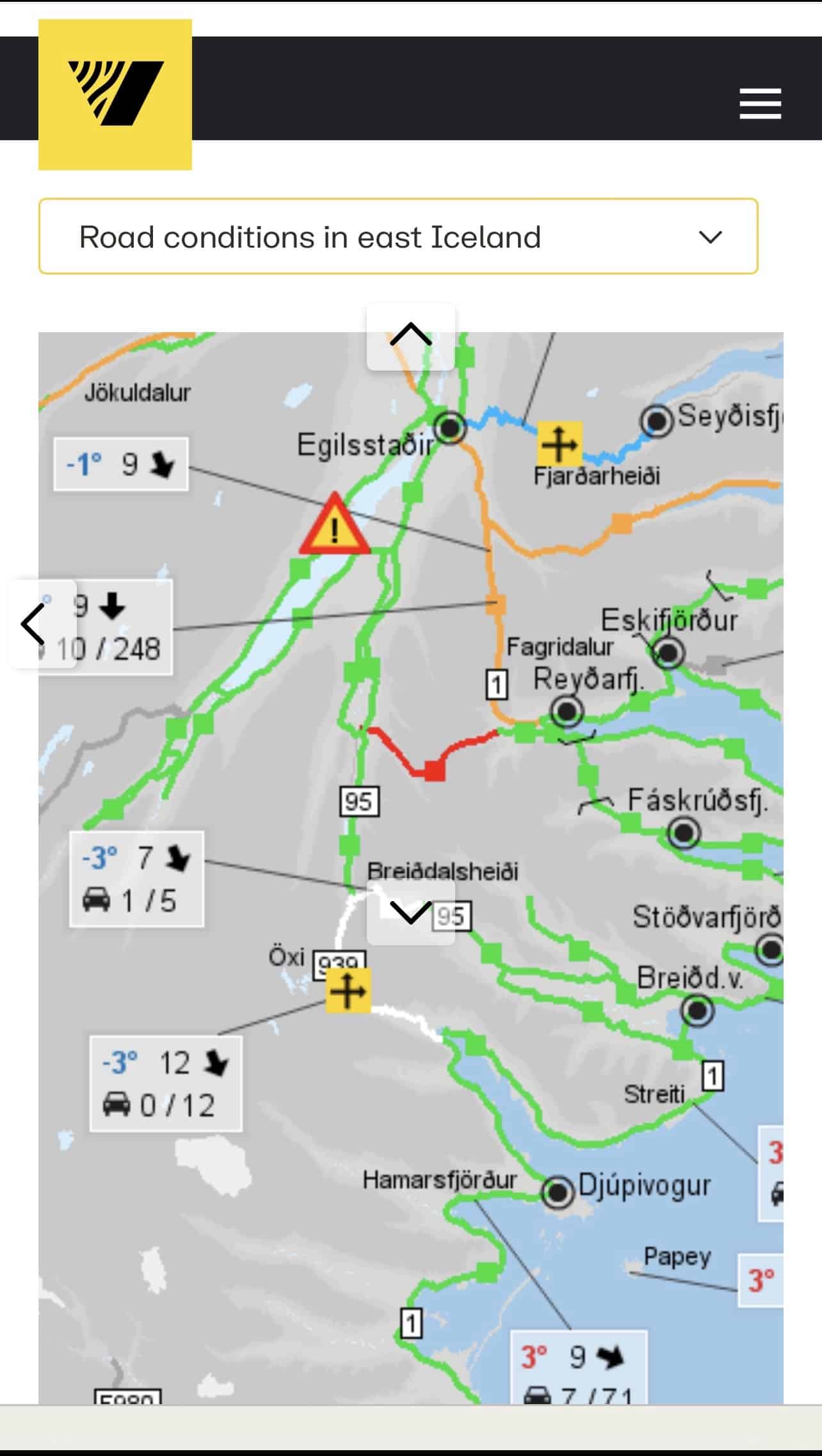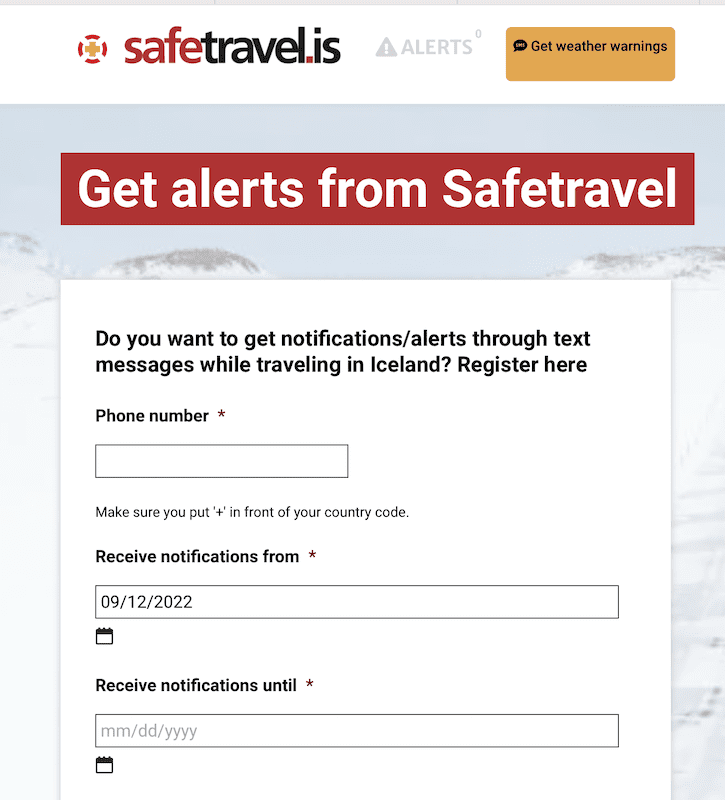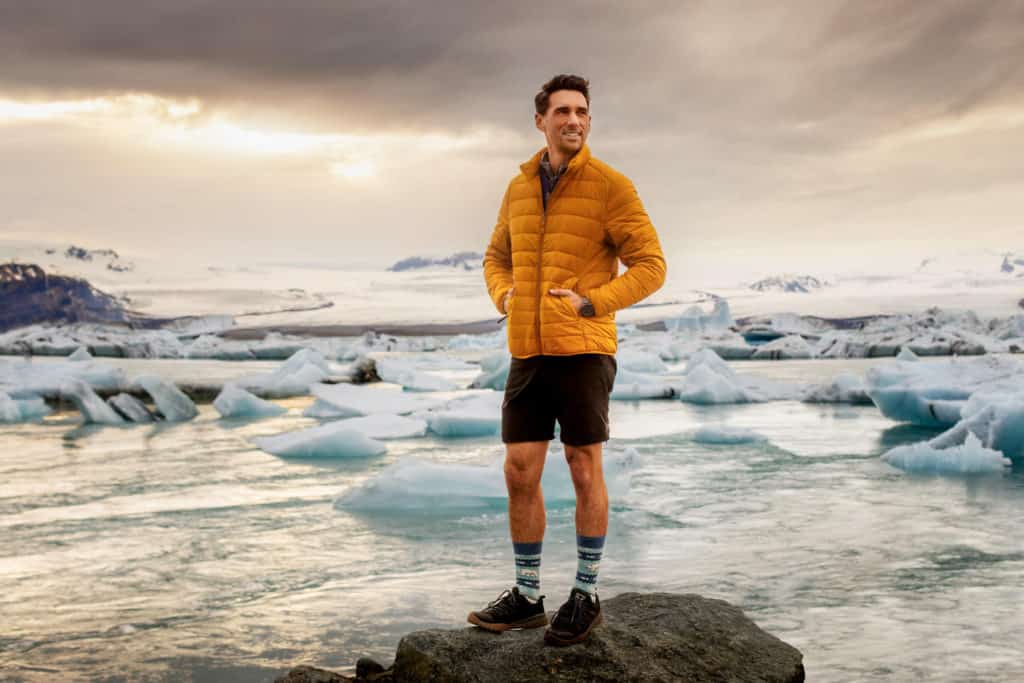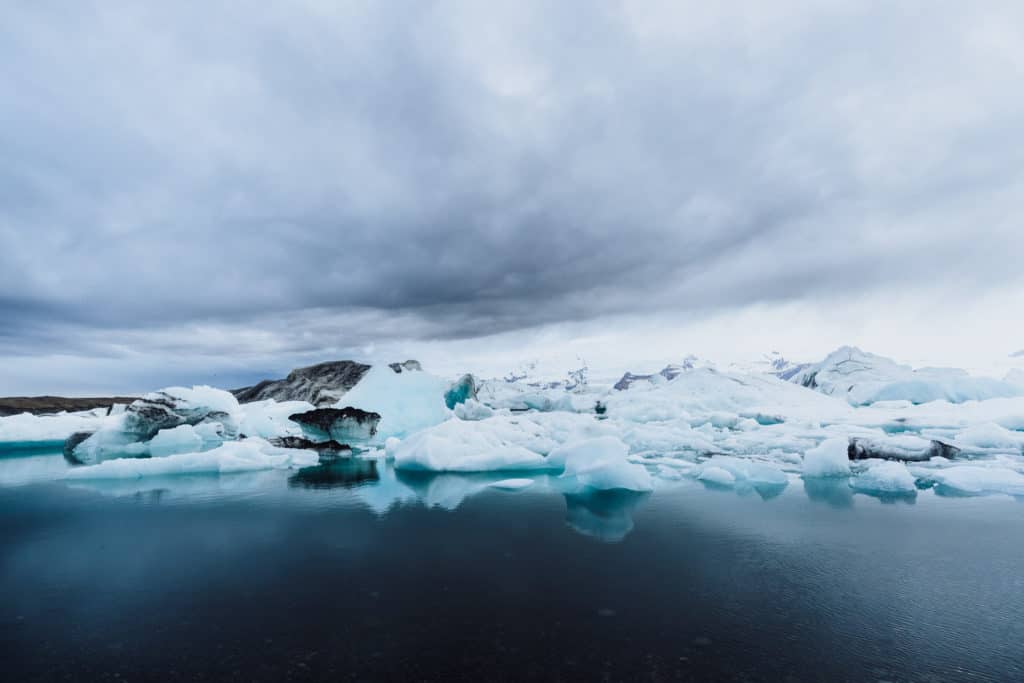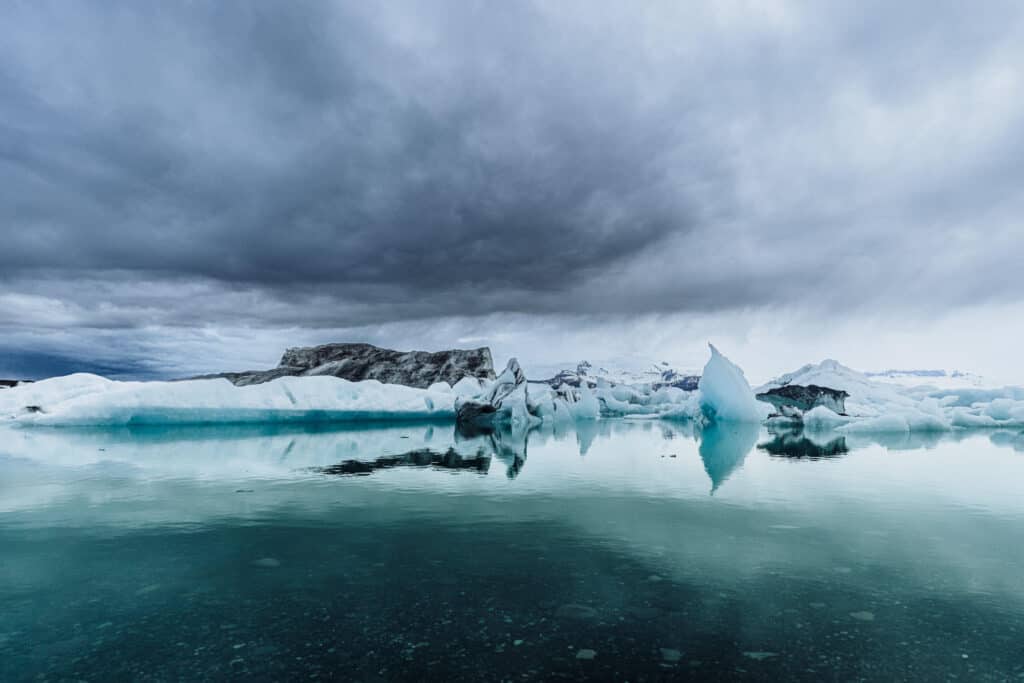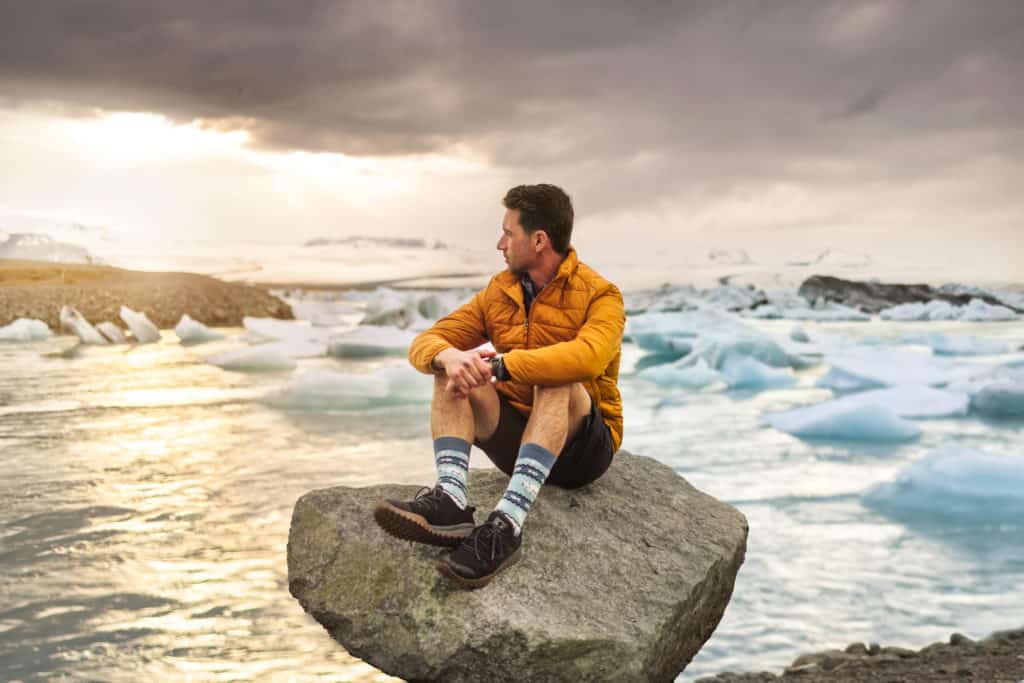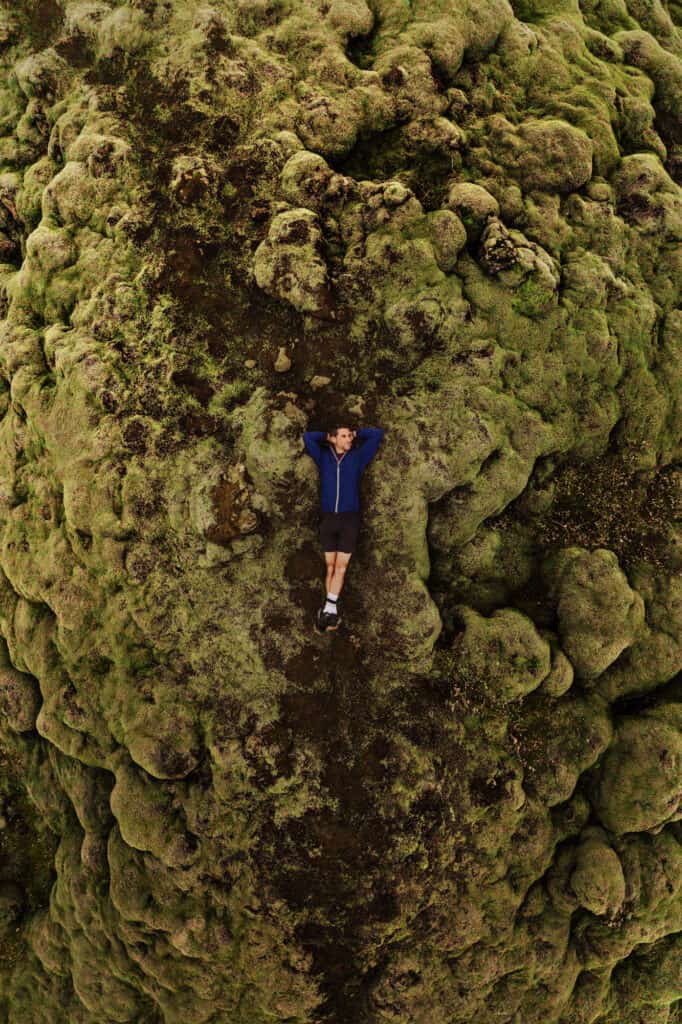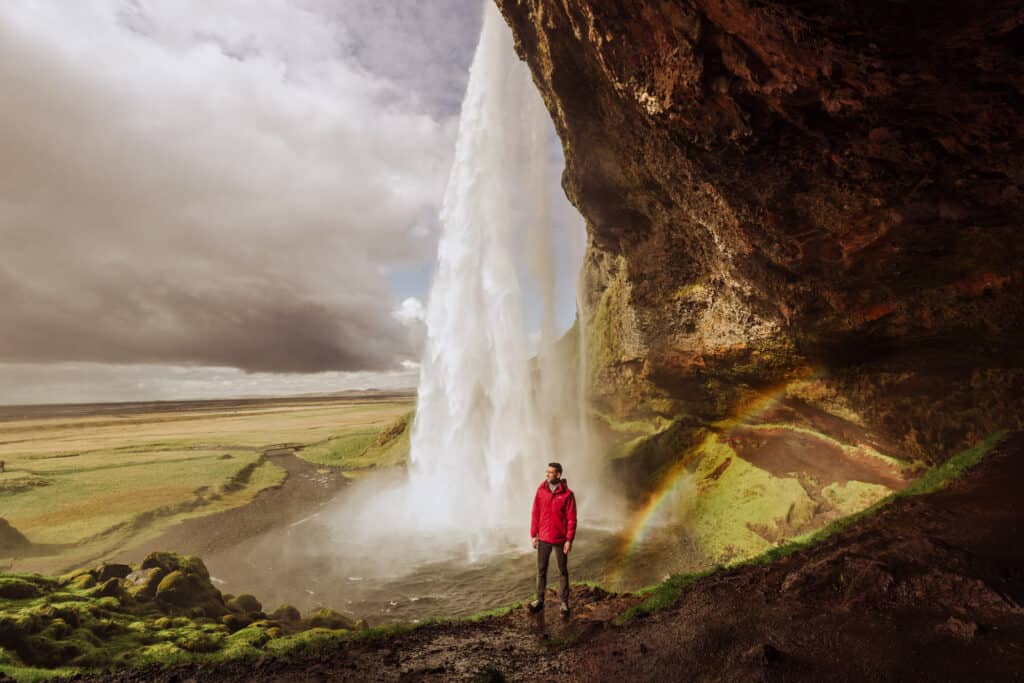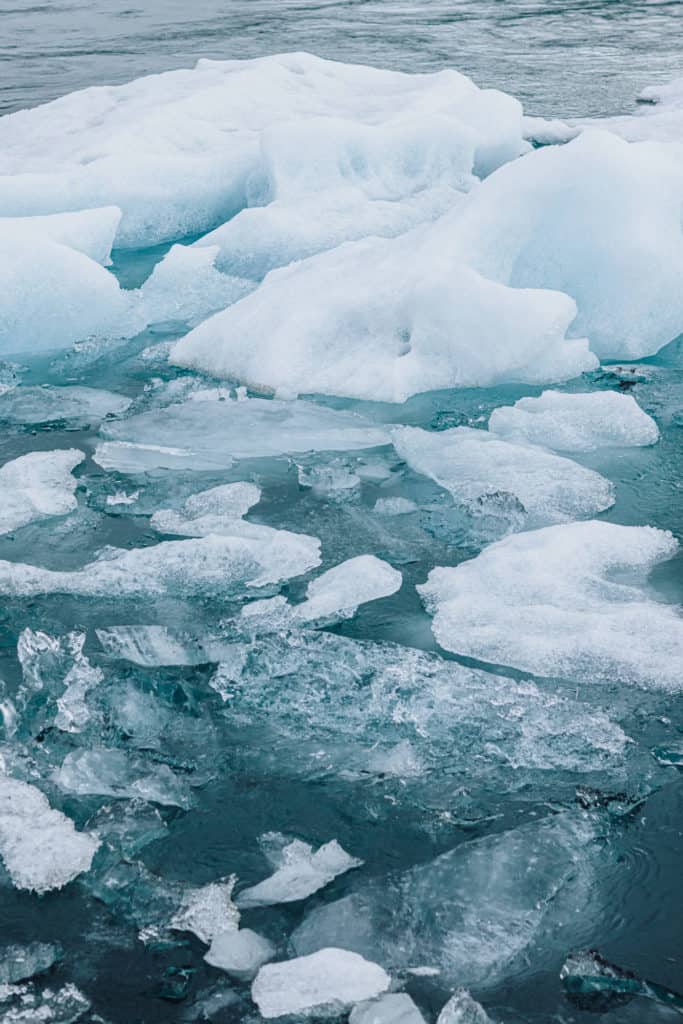Diamond Beach Iceland: A Guide to Jokulsarlon Glacier Lagoon
Diamond Beach, Iceland, with its famous crystal-clear icebergs on a black sand beach, can be a beautiful place to visit, *if* you’re prepared (and flexible).
There’s a saying that Greenland is mostly ice, while Iceland is mostly green.
That may be true, but you’ll find: ice is a stunning part of the Icelandic landscape in this part of southern Iceland.
Key Info about Visiting Diamond Beach Iceland:
- Diamond Beach is a 5-hour drive from Reykjavik.
- You can take a day tour to the glacier lagoon from Reykjavik.
- The “diamonds” on the black sand beach are pieces of icebergs from the nearby glacier lagoon.
Tours of Diamond Beach Iceland
Renting a car and driving around Iceland is easy and efficient. I usually use Discover Cars, since they include big international car rental brands, and also local companies in each country.
➡️ Click to Search Rental Cars in Iceland
You can avoid renting a car altogether, by taking a tour from Reykjavik to Diamond Beach. It’s a haul: about 5-hours east of Reykjavik! Many people prefer having someone else do the driving and navigating, which is completely understandable!
These tours have excellent reviews:
Tours From Diamond Beach Iceland
The kayak and boat tours of the glacier lagoon at Diamond Beach mostly operate between May and October.
🧊 Click for Tour: Kayak in the Glacier Lagoon
While winter is slower for the tour companies, a couple of them offer a winter tour to an ice cave, which starts at Jökulsárlón.
Hotels Near Iceland’s Diamond Beach
The closest hotels and rentals to Diamond Beach are a bit of a drive, but you can use this interactive map to explore the options closest to this spot:
Vik is a bigger town to the west, between Reykjavik and Diamond Beach. I’d suggest spending the night in Vik, since it’s roughly halfway.
➡️ Hotel Recommendation: Hotel Vik Myrdal
Depending on your itinerary, your timeframe, and where else you’re going, I’d also suggest staying in the Höfn area, east of Diamond Beach.
Höfn is an Icelandic fishing town in south-east Iceland. Note that there’s a Höfn and a Hofn, so make sure you have the right one plugged into your map!
➡️ Cabin Recommendation: Hrafnavellir Guest House.
What Exactly is Iceland’s Diamond Beach?
Diamond Beach is the nickname given to a stretch of black sand beach along a stretch of the Atlantic Ocean in South Iceland, where you’ll find icebergs which have broken off from the massive Vatnajökull glacier and floated down the lagoon.
You’ll find Diamond Beach at the mouth of the Jökulsárlón glacier lagoon, which is a lake that turns into a river.
On our two visits to Diamond Beach, we found the icebergs in totally different positions, and actually on two different shores. One side was totally empty on our second visit, so you never know where the current will take them.
Why is it named Diamond Beach?
Big icebergs float down a glacier lagoon, and break apart in the ocean waves.
The current tends to toss ice shards and full icebergs back up onto the beach, which are perfectly clear.
The ice sparkles like diamonds in the sun, set against the black sand beach.
Some edges are as sharp as glass. The clarity is unbelievable!
How to Get to Diamond Beach Iceland
The area is a five-hour drive east of Reykjavik on Route 1, known as Iceland’s “Ring Road.”
Jökulsárlón Glacier Lagoon is adjacent to Diamond Beach.
There’s a walking path that will take you along the river, and under a bridge. It allows visitors to go from the parking lot to Diamond Beach, and up to the glacier lagoon area.
The whole site is visible from the bridge, and easily accessible.
There’s no hike involved. You can see the “diamonds” right from the parking lot.
Driving to Jökulsárlón Glacier Lagoon
It’s easy to rent a car, and drive to Diamond Beach from Reykjavik.
Don’t worry about the five-hour drive time, since you’ll find plenty of other spots to stop at along the way! You’ll pass famous waterfalls, lava fields, and the wreckage of a US Navy plane, which is now a tourist attraction, on your drive to Diamond Beach.
The Cost to Visit Jökulsárlón Glacier Lagoon
The whole site is nicely maintained, but free to visit! You can come and go anytime, day or night!
If you’re driving yourself, you can park and visit both Diamond Beach and Jökulsárlón for free on your own.
The glacier lagoon, full of green glacial water and giant floating icebergs, is on the north side of the highway (the “Ring Road).
I loved the bluish hue in the ice, which varies depending on the oxygen content, the age of the ice, and the amount of light.
There are no permits needed, and no reservations have to be made!
Diamond Beach Iceland in the Winter
Winter lends itself to the opportunity that you’ll catch the Northern Lights. That’s the main reason to risk a snowy, icy, windy drive along the Ring Road.
While the glacier lagoon doesn’t freeze during the winter, you’ll likely see much larger change of icebergs breaking off and floating downstream.
With limited daylight in the winter months, you’ll need to time your visit to make sure you arrive with enough time to walk around and see the different parts of the beach and the lagoon.
You won’t be able to take one of the kayak or boat tours of the lagoon, but if you’re planning a winter visit … that’s probably not part of your itinerary anyway 🙂
The Northern Lights from Diamond Beach
In general, your best bet to spot the Northern Lights in Iceland is to visit in the winter months, between late October and March.
The months of December and January only have around 5 hours of daylight, so just by the sheer number of nighttime hours, your chances of seeing the Northern Lights increase!
I’d imagine they’re stunning, as they appear over the black sand beach, reflecting in the glacier lagoon!
There are no towns near Jökulsárlón Glacier Lagoon, so the colors in the sky will be even more vibrant with light pollution non-existent.
Iceland’s Winter Weather
A downside of visiting Diamond Beach in the winter is the unpredictability of the weather. The icebergs are most beautiful on a sunny day, against the black sand beach. A snowstorm could temporarily ruin that view for you.
On the upside, it doesn’t snow a whole lot. The Höfn weather station says it snows around three days a month in December, January, and February.
Your chances of having some sort of precipitation is around 50% during those winter months.
But again, the weather in Iceland is never really ideal, so it should just be taken as ‘a given’ that at some point during your adventure, the weather won’t be kind.
Winter can be hellish in Iceland, especially if a storm is moving through.
That said, spring (and even summer!) can be hellish in Iceland.
On a trip in late May, we were caught in snow drifts on the Ring Road, and frozen by winds so strong they’ll knock you over.
Temperatures can be deceiving. In December, the highs are often in the 40s, which is warmer than New York or Chicago.
However! The wind chill will make it much more miserable outside.
Winter Driving Advice in Iceland
Especially during the winter months, you’ll rely heavily on the websites:
The locals use them, so they must be good!
Check the websites out before your trip to get familiar with what they offer.
The radar images, road hazard warnings, and constant updates helped us a lot as storms moved through.
Also, you can download the app from SafeTravel.is to use while you’re there.
As I write this, the weather is clear without any storms or impassable roadways, but if you look at the bottom of the map below, you’ll see the different colors that will pop up to warn you of dangerous road conditions as they arise.
They range from orange, meaning spots of ice, to red, meaning impassable. You’ll see a lot of orange in the winter.
The radar maps showing the rain and snow are kind of pixelated, and not overly slick, but they’re a huge help if you’re driving!
We ended up on several orange-coded (ice) and white-coded white roads (wet snow/snow) but avoided anything more treacherous.
The snow drifts were enough for us!
These photos are from the mountain passes in East Iceland, far beyond Diamond Beach, but an example of the color-coded road alerts:
Sign Up for Travel Alerts
You can also choose to have alerts sent to your phone from safetravel.is about everything from seismic activity to storms to road conditions:
You’ll have cell reception in most places. I was pleasantly surprised by the cell coverage in the mostly rural island!
Diamond Beach Iceland in the Summer
Tour operators offer boat and kayak tours of the glacier lagoon during the summer months.
You’ll have to book online in advance during the busiest months, since the tours can sell out.
It’ll cost around $100 – $120 for a kayak tour of Jökulsárlón, which lasts 90 minutes.
Summer lends itself to endless daylight in Iceland, so you can stop by most any time of day or night to explore and take photos.
Stopping by after midnight means you’ll still have light, but likely won’t have a crowd.
May, June, and July all have 18+ hours of daylight!
We caught sunset around 10:30pm in May, and it was a great experience to see the sunset colors through the crystal-clear icebergs.
When the sun is higher in the sky during the summer, it’ll cause the ice on the black sand beach to shimmer even more.
Other tour groups offer zodiac and amphibian boat tours for groups, which will send you cruising through the icebergs in the lagoon.
The larger amphibian boats fit more people. That will cost around $40 per person, and last half an hour.
Whales, Seals, and Wildlife at Jökulsárlón
If you’re lucky, you’ll spot seals playing in the icy water. We saw a few on one of our visits.
Once in a while, during certain times of the year, they say you’ll see Orcas swimming off-shore, hoping a seal swims their way.
No Swimming at Diamond Beach in Winter OR Summer
I can’t imagine swimming in the icy-cold waters off Iceland! The waves and currents are pretty intense along the southern shore, so swimming isn’t a good idea.
Drones and Photography at Diamond Beach
Drones are allowed, but you may encounter a few people flying at the same time.
I’ve been there twice, and the icebergs are always spread out over a distance.
It’s best to walk down to an uncrowded spot so your drone video doesn’t include strangers strolling along the coast!
Diamond Beach in the winter will offer even fewer visitors, and fewer people getting in your photos!
The photography options are endless. We even saw photography classes being held on the shore of the lagoon.
As I mentioned, the sun sets at wildly different times over the course of the year in Iceland, but sunset was an excellent time to visit for photos if you can swing it!
The sun will shine through, and reflect off, the crystal-clear icebergs on the black sand beach, making for some pretty breathtaking shots.
While a lot of people make this a stop on their road trips, the area is so vast that you’ll have no trouble finding some space to yourself for photos, or just to relax and enjoy the amazing scenery.
Other Sites Near Diamond Beach
The Mossy Lava Fields (it’s on Google Maps) are between Diamond Beach and Vik. The unique landscape consists of moss, several inches thick, growing on lava rocks. It stretches for many square miles, and there are driving and walking paths through the site.
On the drive from Reykjavik, Seljalandsfoss, Skogafoss, and the Reynisfjara black sand beach in Vik are all iconic stops to make if you visit Diamond Beach!
Wrap: Is a Visit to Diamond Beach Iceland Worth It?
I loved this stop on our trip even more, because it’s the total opposite of the scenery I’m used to in Arizona and the desert southwest.
The glacier alone, and the beautiful green-blue waters in the lagoon are worth the drive.
The “diamonds” on the beach take it to a new level.
While you can’t swim here, you can plunge into icy glacier water closer to Reykjavik and snorkel at Silfra. And, of course, when you’re ready to warm up you can bathe in the geothermal waters at Blue Lagoon or Sky Lagoon!
